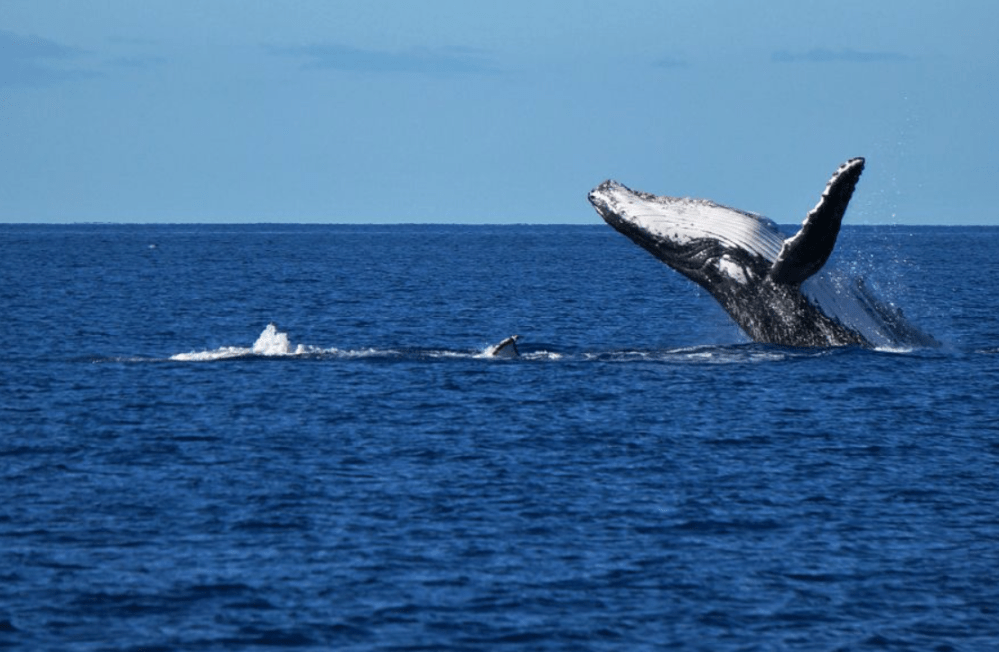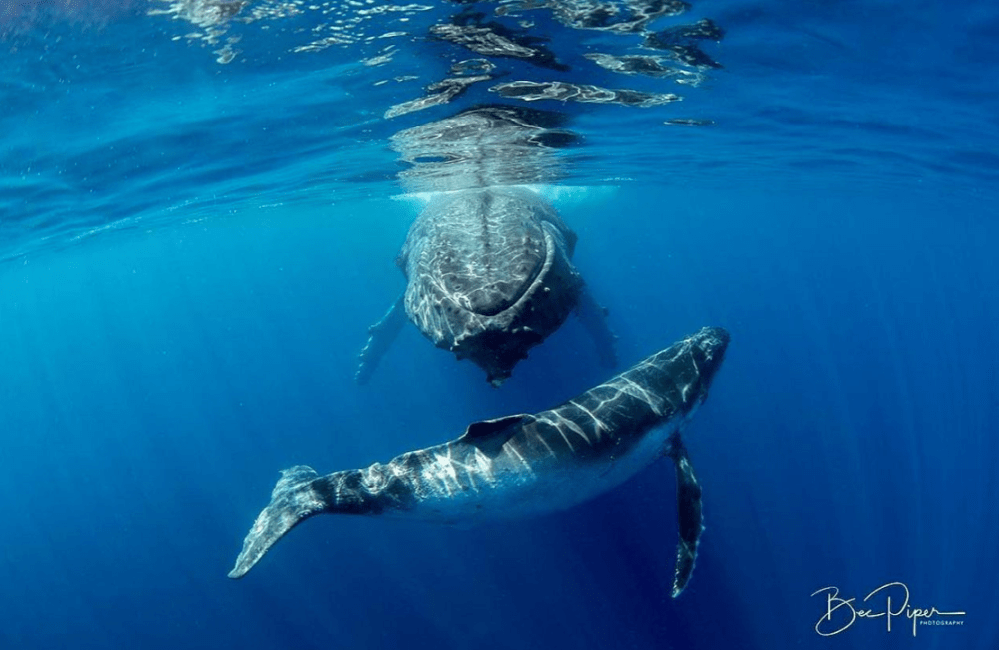Capturing the Moment: Photography Tips for Whale Watching
Written by – Telana Thompson
Whale watching is a truly remarkable experience that leaves us in awe of these majestic creatures. The Whitsundays, with its rich marine biodiversity, offers a unique opportunity to witness the beauty and grace of humpback whales during their annual migration. If you’re planning a whale watching excursion and want to capture those unforgettable moments on camera, we’ve got you covered. In this blog post, we’ll share some essential photography tips that will help you preserve those magical encounters with whales in the Whitsundays.

Photo Credit – Sailing Whitsundays
Equip Yourself with the Right Gear:
Before setting out on your whale watching adventure, make sure you have the appropriate camera gear. While professional DSLR cameras with telephoto lenses yield the best results, even a high-quality point-and-shoot or a smartphone with a good zoom function can capture memorable shots. Don’t forget essentials like spare batteries and memory cards to ensure you never miss a moment.
Learn about Whale Behavior:
Understanding the behavior of whales can significantly enhance your photography. Whales exhibit various behaviors such as breaching, tail slapping, and spy-hopping. Research these behaviors in advance, so you can anticipate and capture them as they happen. Patience and observation are key to capturing those incredible moments.

Photo Credit- Sailing Whitsundays
Get Close, But Respect Their Space:
It’s essential to maintain a safe and respectful distance from the whales. Respect the guidelines and regulations set by your tour operator and local authorities to ensure the well-being of the whales and your own safety. Even if you have a zoom lens, remember to keep a respectful distance, as approaching too closely can disturb the animals.
Composition and Framing:
Compose your shots carefully to capture the essence of the moment. Consider the rule of thirds, where you divide the frame into thirds both horizontally and vertically, and position your subject or point of interest along these lines or at their intersections. Use the vastness of the ocean or the backdrop of the Whitsunday Islands to create visually stunning compositions.
Timing is Everything:
Whale photography requires patience and timing. Keep your camera ready at all times, as you never know when a whale will breach or display other captivating behaviors. Continuous shooting mode can be useful in capturing rapid movements, ensuring you don’t miss a split-second action.
Lighting and Exposure:
The lighting conditions at sea can be challenging, especially on a bright day with harsh sunlight or when the whales are partially submerged. Avoid using the built-in flash, as it may startle the whales. Instead, rely on natural light and adjust your exposure settings accordingly. Experiment with exposure compensation to achieve the best results, especially when photographing white or dark areas of the whales’ bodies.

Focus on the Eyes:
When photographing whales, aim to capture their eyes. The eyes convey a sense of connection and emotion, adding depth to your images. Set your camera’s autofocus point on the eyes or face of the whale, ensuring they are sharp and in focus.
Shoot in Burst Mode:
Whales are dynamic creatures, and capturing their movements in a single frame can be challenging. Shooting in burst mode (continuous high-speed shooting) allows you to capture a series of images in rapid succession, increasing your chances of capturing the perfect shot.
Experiment with Perspectives:
Don’t be afraid to experiment with different perspectives and angles. Try shooting from a lower vantage point to capture the size and scale of the whales against the horizon or the water’s surface. Look for unique viewpoints to add a creative touch to your images.
Enjoy the Experience:
Lastly, don’t forget to put your camera down and simply enjoy the magical experience of being in the presence of these magnificent creatures. Take a moment to appreciate the beauty of the whales and their surroundings. Sometimes, the most memorable moments are best stored in our hearts rather than on a memory card.
Photographing whales in the Whitsundays is a thrilling adventure, and with these tips in mind, you’ll be well-prepared to capture stunning images of these awe-inspiring creatures. Remember to prioritize their well-being and respect their space while you document their journey. By combining your passion for photography with a deep appreciation for these gentle giants, you’ll create lasting memories and share the wonders of whale watching with others.
So grab your camera, embark on a whale watching tour in the Whitsundays, and let your photography skills immortalize those breathtaking moments.

